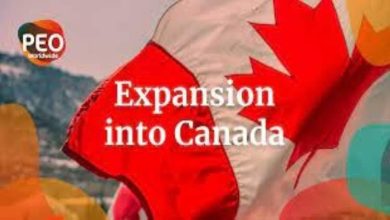
Websites are gradually moving toward adopting responsive web design as the norm. Along with speed, design, and functionality, responsiveness is one of the most important factors in determining the success of a website.
Since mobile use surpassed that of desktop users in 2015, responsive website design has become increasingly vital. Google started giving a boost in search rankings to websites that were optimized for mobile devices.
Consequently, responsive website design was born. Before delving into the nitty-gritty of flexible website design, let’s take a look at the fundamentals of this approach.
Let’s talk responsive design. The layout and content of a website may be made to adapt fluidly to different screen sizes through the use of a responsive Denver web design company.
Responsive web design transforms components that are only compatible with desktops into ones that are multi-responsive. Therefore, site users may choose not to resize or zoom in on non-responsive websites.
Customers who are unable to visit these sites become frustrated and leave your site as a result.
A responsive website avoids the requirement of having many device-specific pages.
The use of responsive design, as opposed to designing separate mobile and desktop websites, results in a more consistent user experience.
Responsive Web Design:
In 2015, the majority of internet users were mobile. As a response to this ongoing pattern, Google released Mobilegeddon, an update to their search engine algorithm that ranked websites according to how well they functioned on mobile devices.
The update made by Google improved the SERP results for mobile-friendly websites.
Because we live in a culture that uses several devices, providing a positive user experience on a website is essential.
When you use a smartphone, you anticipate that it would have excellent navigation and usability features. It is simple to move on from a website that does not fulfill your requirements if you visit it.
Let’s talk about the significance of responsive web design now that we have a basic understanding of its underpinnings. Let’s examine the impact that a responsive website has on a company’s bottom line.
- Influence on Google Ranking
- Cost-Effectiveness
- Easy Maintenance
- Optimized Traffic
Responsive Design’s Importance
Experience is important to the proprietors of websites. You want people to enjoy their time on your website and find it useful so that they will come back.
If it takes a while for your website to load on a mobile device or if the photos on your site have a low resolution, your company may come off as unprofessional.
Companies with a lack of professionalism are avoided. However, a responsive design could convince clients to give your company a chance.
The content may be read more quickly without having to zoom in or scroll, which will result in improved first impressions for site visitors.
Google gives preference to mobile-friendly websites; hence, responsive design can help search engine optimization. When paired with several other SEO variables, responsiveness has the potential to improve search engine results.
Google uses a website’s responsiveness as one of its ranking factors. Search engines will assign a lower ranking to your website if it is not responsive.
Mobile devices are the source of about 78 percent of all web traffic throughout the world. This accounts for roughly half of all the traffic on the internet worldwide. This demonstrates how important it is to have a mobile-friendly website.
You will witness an increase in the number of visitors to your website as well as the amount of time they spend there.
Keeping separate mobile and non-mobile sites up and running might be expensive. A mobile website is not required if it is designed to be responsive, which will save you money. There is only going to be one design for the site that will function for all visitors and devices.
Maintaining one version of content on a responsive website is less expensive than doing it for two versions.
It has a high starting cost. However, maintaining two websites might result in cost savings.
The majority of companies, particularly smaller ones, do not have a lot of time to devote to altering the layout of their websites. You won’t need to pay for a designer if your website has a responsive layout since you can make changes rapidly and easily yourself.



